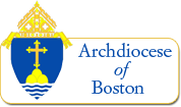From Father Steven - November 30, 2025
Dear Brothers & Sisters,
I hope you had a nice Thanksgiving with your loved ones! Please see the letter below from Fr. Victor about Advent.
God Bless,
Fr. Steven
—————————————————————————————————-
Growing up I have always associated ADVENT with Christmas with all the Christmas carols, food, gifts and family reunions. It was much later that I understood that Advent is the month-long preparation for that much awaited day.
If we have 4 seasons throughout the year: winter, spring, summer & fall; the Church has 6: Advent, Christmas, Lent, Paschal Triduum, Easter and the Ordinary time. And Advent is the first season that ushers the first day of the Church’s liturgical year. It is like New Year, like January 1.
Advent comes from the Latin word, adventus, meaning coming or arrival. A Father of the Church speaks of Jesus’ three comings. First, we all know that Jesus Christ was born more than two thousand years ago in that town called Bethlehem.
Second, when he ascended to his Father, he promised to remain with us always, but will come again at the end of time. As to when, we do not know. That is why, he tells us: 'be vigilant and ready anytime as he may come at a time and hour we do not expect.’ That is why, advent fills us with so much hope and expectation.
Finally, there is also his third coming. The first one was in the past. The second will happen in the future, but his third coming is today, in the daily events of our life. The book of Revelation presents this very well. ‘He is outside, knocking at the door of our heart, if we let him in, he will come and dine with us.’ What a gift, to be graced by the presence of our Lord.
This year 2025, Advent coincides with the feast day of St. Andrew, November 30. Each week has its theme: the anticipation of Christ’s second coming - the first week; then John the Baptist tells us “prepare the way of the Lord.” on the second Sunday; then we switch to a joyful note, the Gaudete Sunday for the Lord is to come; and the fourth Sunday, Mary & Joseph leading us up to the nativity.
The date when Advent was first observed is hard to determine as this evolved over time in several places. In its earliest form however, it may be traced back to the church in France in the 4th century. It was a time of preparation for the Feast of the Epiphany when converts were baptized.
In the 5th century it was officially introduced into the church calendar. But its character was similar to Lent but later became more joyful in anticipation for the birth of Christ.
The Advent we know today began in Rome. Pope Gregory I in the late 6th and early 7th century, composed many prayers, psalms, and themes. And by the 10th century the season of Advent included 4 Sundays & weekdays leading to Christmas as we have today.
Like Lent, Advent has some elements of penance in preparing, quieting and disciplining our minds & hearts for the full joy of Christmas. Its liturgical color is purple, except on Gaudete, meaning “rejoice” Sunday, where the priest may wear the rose color vestment.
The late Pope Francis reminds us: “Advent is a journey towards Bethlehem,” and that memory directs us with eager longing for the second coming of Christ at the end of time.”
Advent comes at the dark[est] time of the year, when the day is short and night is at its longest. Yet it is during this time when Jesus Christ, the true light comes to cast away our darkness. Truly advent is a hopeful season that keeps pointing towards the eternal light that shines in the ‘night of our life’ to show us our way back home to the Father.
God Bless,
Fr. Victor

